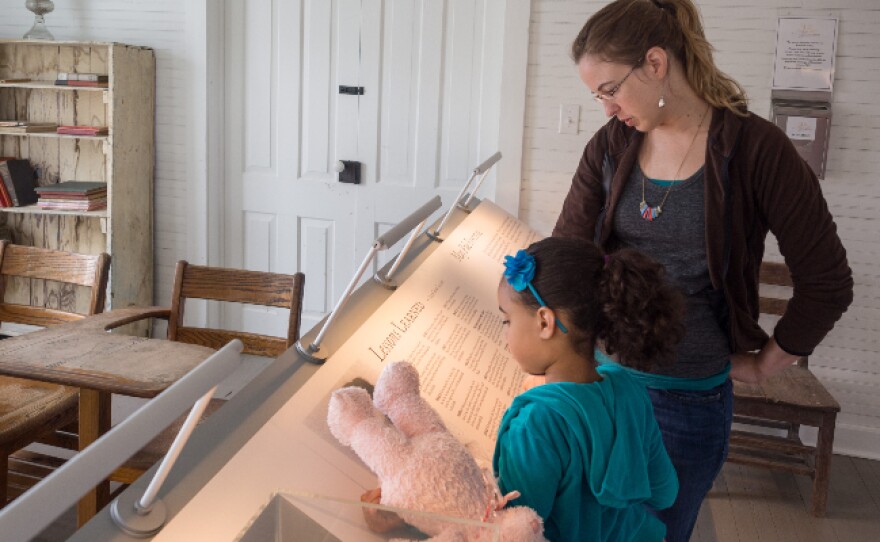Established in 1868, the is believed to be the oldest African American school still standing in the state. It was a functioning elementary school until 1950, and starting in the late 1990s, former alumni and the community began efforts to restore and preserve it.
In 2009 it was listed on the National Register of Historic Places, and today it is also home to a . Artist has been following the restoration efforts for decades. She first fell in love with the building as a child, when she would drive past the old school every summer en route to her grandmother’s house in Kitty Hawk. Over the next few decades, Bateman observed the structure beginning to deteriorate, and in 2010, after 40 years of admiring it from afar, she became fully engaged in restoration efforts. She has documented oral histories of local elders and collaborated with the community to create a collection of historic folksongs inspired by those who attended Javisburg Colored School.
Bateman is an associate professor of fine arts at Pratt Institute and joins host Frank Stasio to share the history of the school and the efforts to preserve both its physical structure and its stories. The Historic Jarvisburg Colored School Museum is open Wednesdays, Thursdays, and Saturdays from 10 a.m. to 3 p.m.
Interview Highlights
On the decision to add art to the school:
The renovation was well underway at that point. Currituck County has been a tremendous supporter — the volunteers, the fundraisers … These folks really pulled it all together with the elders and the local community … But the building was stark. It was clean. It was fresh. It was freshly painted, freshly renovated, but it was completely empty at the time.
On documenting the school memories of the Jarvisburg Colored School alumni:
The ones that they spoke about with me most often were about being outside. They’re about the long walk to school. Some students like Norma Case Williams had four miles to walk to school. Playing out back in the school. Playing a really special magical game in the woods and out on the fields called straw houses where they make maps of their fantasy houses with pine needles. It was all about being outdoors: the seesaw, hopscotch.
On choosing folksongs for the audio exhibit:
I was doing research about songs that would have trickled up through the Eastern Seaboard all the way down from the Georgia Sea Island Singers to Bessie Jones — and Ella Jenkins was also a very big influence. These are women educators in song that worked hard to preserve folk song, vernacular folk songs in [the] South … I started there and gathered a bunch of songs and played them for [former students of the school] like Ruth and Alice … I would see what they recognized and what they were attracted to, and we got a list of about 30.
On the experience of visiting the museum:
There are oral histories on film that are just captivating. The photos and stories … When you go through that back porch and exit down the stairs … You’ll capture bits of sound through the belfry which we’re hoping to activate again.













